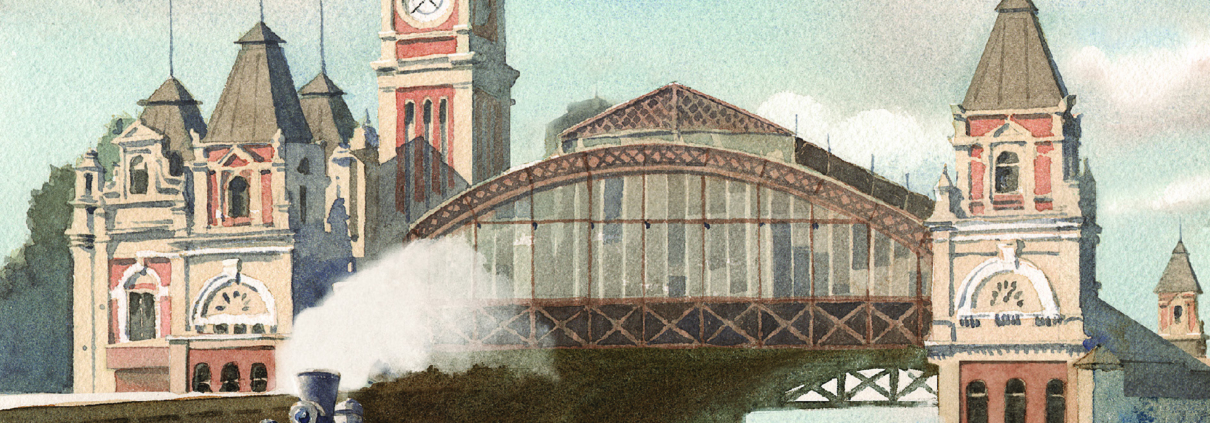Trilhos do desenvolvimento: As ferrovias no crescimento da economia brasileira 1854-1913
William Summerhill’s book on the economic impact of railroads in nineteenth-century Brazil, Order Against Progress (Stanford University Press, 2003), has been published in Portuguese translation as Trilhos do Desenvolvimento (Ed. Livros de Safra, São Paulo, 2018). [Ebook at amazon.com.br and at amazon.com].
Investments in railroads in the second half of the nineteenth century were the single most important factor in Brazil’s transition from relative economic stagnation to growth around 1900. Railroads provided large savings on transport costs, releasing scarce resources for other sectors of the economy. The government’s policy of contingent subsidy mobilized capital to build railroad lines, attracting investment within Brazil and from abroad. While this provided investors with a relatively secure return, the government’s regulation of rates capped the profits of foreign companies, and captured most of the economic surplus from lower-cost transport for Brazil.
Elio Gaspari note on Trilhos do Desenvolvimento in Folha de S.Paulo and O Globo (September 2018); Marcelo Toledo review of Trilhos do Desenvolvimento (October 2018) and blog post (August 2018), in Folha de S.Paulo; Samuel Pessôa, “Trilhos do Desenvolvimento: nosso subdesenvolvimento tem sido construído por nós mesmos, não por gringos,” in Folha de S.Paulo (August 2018); interview with João Soares in Deutsch Welle (Brasil), “Brasil hoje não tem posição no mercado que tinha no século 19,” (September 2018).



